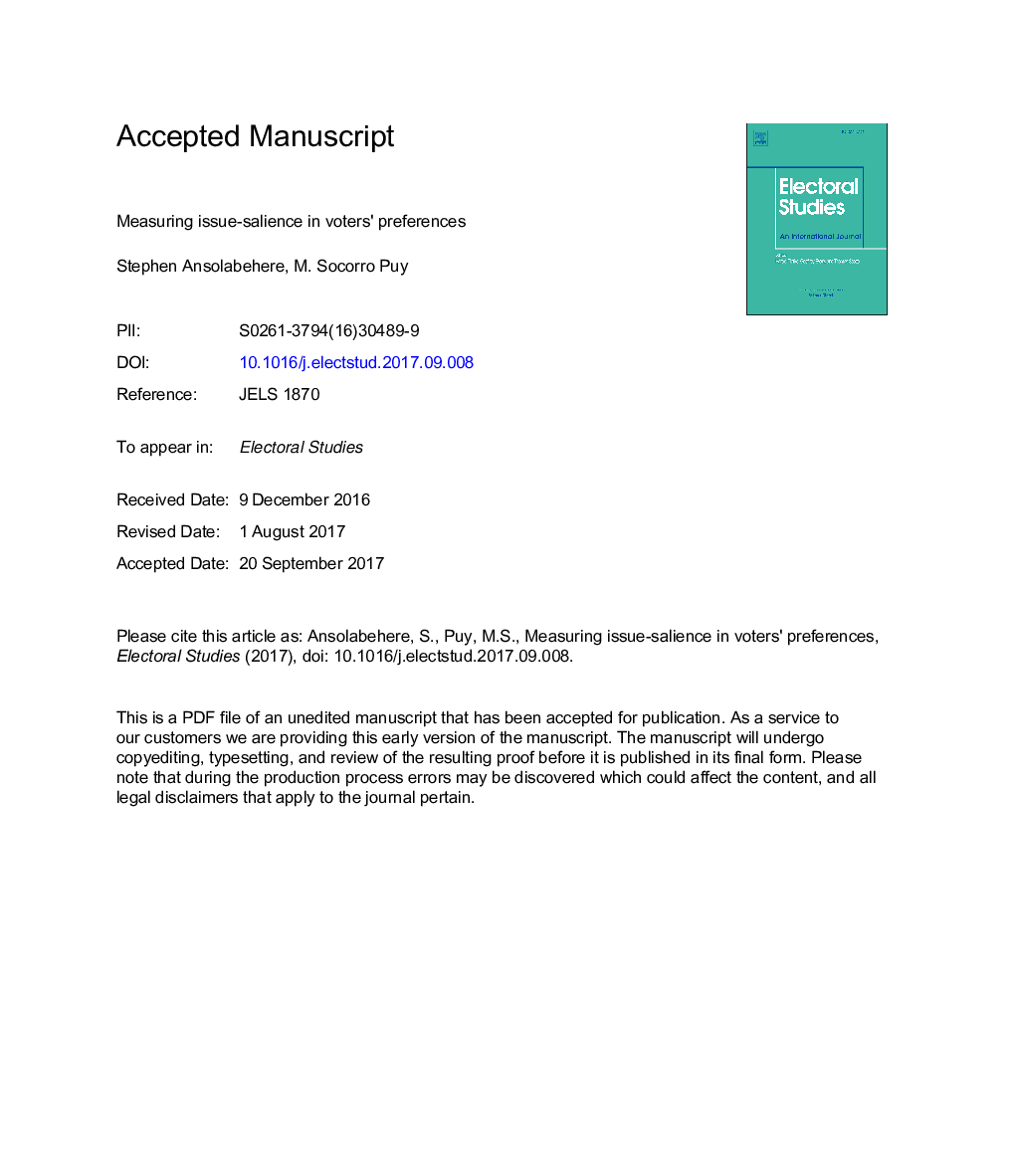| Article ID | Journal | Published Year | Pages | File Type |
|---|---|---|---|---|
| 7463349 | Electoral Studies | 2018 | 37 Pages |
Abstract
We provide a new approach to the measurement of issue salience that explains how the salience of an issue among voters and the position of the parties on a given issue interact to each other and determine vote choices and aggregate election results. Analyzing the spatial model of voting, we show how voting probabilities can be estimated by a multinomial logit regression where the ideal policy locations of voters on each issue dimensions are independent variables, and where no individual specific perception about the location of the political parties is used in the regression. The pieces of survey information that are used to calculate issue-salience are: i) specific position of respondents on each issue dimension, ii) vote choice, and iii) the policy position of parties on each issue dimension, which is measured by the mean perceived position. Rather, only an aggregate estimate of party positions on issues is needed. To demonstrate the mechanics and value of the approach, we analyze regional elections in the Basque province of Spain. In that region, we find that the left-right dimension is about two times more salient than nationalism. The nationalism issue is, however, more divisive than the left-right issue. This shows that the issue that voters care more about, may not coincide with the issue on which the parties offer more distinctive policies.
Keywords
Related Topics
Social Sciences and Humanities
Social Sciences
Geography, Planning and Development
Authors
Stephen Ansolabehere, M. Socorro Puy,
